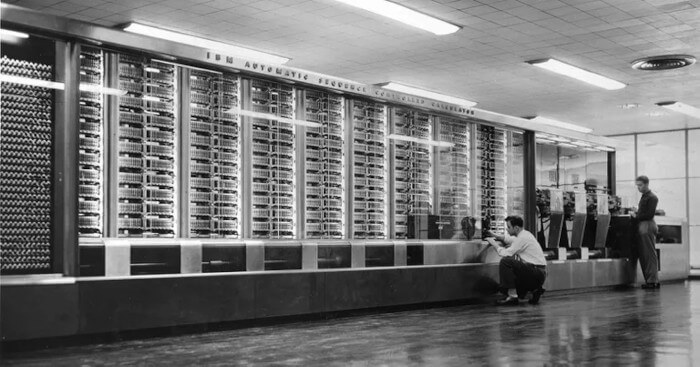
New words and phrases tend to somehow miraculously seep into our everyday life. This is regular for the world of modern technology. And as a person working closely with words and technology, have you ever wondered how these words are born? Some of the technical terms contain entertaining facts, so you can impress your friends and family by dropping these into a conversation.
Pastries, Crumbs, and Ham. Wait, Are We Still Talking About Technicalities?
Blog
A blog is a website with regularly added records containing texts, images, multimedia. The content is presented in reverse chronological order. In 1997 a writer Jorn Barger created a site with links to his readers; he called it Robot Wisdom WebLog. That caught on and was modified into the two words “We Blog” on PeterMe.com, the online journal of Peter Merholz, in 1999. Eventually, that was shortened to just Blog.

Boilerplate Text
Boilerplate text is any written text that can be reused in new contexts or applications without significant changes to the original. In the field of printing, the term dates back to the early 1900s. From the 1890s onwards, printing plates of text for widespread reproduction such as advertisements or syndicated columns were cast or stamped in steel, ready for the printing press, and distributed to newspapers around the United States.
By analogy, they came to be known as ”boilerplates” because of their similarity to the metal nameplates from the steam age. Hence boilerplate text has come to mean text that is fixed across all outputs.

Breadcrumbs
Breadcrumbs is a mix of two words bread + crumb. It is a type of secondary navigation scheme that reveals the user’s location in a website or documentation. The term comes from the Hansel and Gretel fairy tale in which the two title children drop breadcrumbs to form a trail back to their home. Just like in the tale, breadcrumbs in real-world applications offer users a way to trace the path back to their original landing point. For example, in ClickHelp the breadcrumb automatically displays where you are in the table of contents.

Browser
Browser is an application used to access and view websites. The name is a derivative of the verb browse, which originated from Anglo-French brouts, meaning “sprouts.” The word was used solely for a forager until the 19th century, when the verb browse started to apply to other types of wandering and searching, such as done in a library or bookstore, where the browser seeks food for thought.

Bug
A bug computer definition is referred to as a failure or a flaw in the software program. Often this term is credited to Grace Hopper. In 1946, she joined the Harvard Faculty at the Computation Laboratory where she traced an error in the Harvard Mark II to a moth trapped in a relay. This bug was carefully removed and taped to the logbook. However, the use of the word ”bug” to describe defects in mechanical systems dates back to at least the 1870s. Thomas Edison used the term in his notebooks and letters.

Cloud
A cloud refers to servers that are accessed over the Internet, and the software and databases that run on those servers. Nowadays, storing data in the cloud and working in the cloud via cloud computing are commonplace. The word cloud in reference to the airy masses floating in the sky has become a metaphor for the vast expansiveness of the Internet, and it is because of medieval thinking that this figurative use of the word by tech companies exists today.

In the Middle Ages, a cloud designated masses of earth. A bit later, people started to perceive the formations in the sky as floating clusters of rock. That led to the transference of the word for “mass of earth” to the “masses in the sky”. At last, the “land” senses of cloud completely crumbled, together with any confusion as to what cloud meant.

Cookies
It is a small bit of information that travels from a browser to the webserver. The fact that it’s a pretty sweet treat that your info just pops up when logging in into your account is not the reason it’s called a cookie, though. The term cookie is actually a comparison to a fortune cookie. Early programmers thought there was a pretty strong similarity between a program that saves information within its code and the Chinese takeout staple that saves fortunes within its stale walls.

File
A computer file is defined as “a collection of data treated as a single unit.” The origin of that use of file goes back to the days of handwritten documents when the word meant “a collection of papers placed on a file.” The phrase “on a file” is intentional: in the past, a file referred to a wire or cord on which documents were strung for preservation and reference – a practice that goes back to the early 16th century. The word is a borrowing of French fil, meaning “thread,” which itself is from Latin filum, of the same meaning.
File has since come to refer to other means of storing a collection of documents in an orderly way, like folders and cabinets, and a wire isn’t necessary for filing – nowadays, you don’t even need one to access your computer files.

Radio Buttons
A radio button in software and websites is very common nowadays. It is an interface element that allows the user to select one option from a predefined set. The term came from car radios. Originally car radios used buttons where only one could be pressed at any time. This same functionality is replicated in software.

Snippet
The word “snippet” was originated in 1660 from or akin to Dutch & Low German snip; akin to Middle High German snipfen to snap the fingers. The first known use of snip was in 1558, in newspapers.
The snippet had a nickname “the stepchild of journalism” which was not normally credited to a named reporter.
Therefore, in terms of a journalist’s career, snippets were of little importance. They carried “the second-rate news of any given day” and could be ousted by more significant events. Yet they were extremely numerous and by 1900 constituted more than half the stories printed with respect to some types of material. Later on, snippet has fallen into the ranks of programming terms. Its other well-known name is “answer box”. To save your authoring time, ClickHelp has to offer the possibility of using Snippets (to share content among topics without rewriting).
Software
The software comprises the entire set of programs, procedures, and routines associated with the operation of a computer system. Alan Turing proposed the first theory about software in his 1935 essay Computable numbers. The term itself was coined in 1953 by Paul Niquette in his letter where he used the word “software” by contrast with hardware (“the computer itself”) – first used in print by John Tukey 1958.

Spam
Spam is unrequested messages sent in bulk by email or sending the same message over and over to the same user. Who would think that this word has its root in “meat.” The name Spam was derived from a contraction of “spiced ham” (unexpected, isn’t it?). The root of this word is in British humor. The sources say about the sketch of the BBC television comedy series Monty Python’s Flying Circus. The sketch, set in a cafe, has a waitress reading out a menu where every item but one includes Spam canned luncheon meat. It became a synonym for continuous repetition. During WWII and beyond, the meat colloquially became known in the UK as an acronym for Special Processed American Meat.
Wi-Fi
Wi-Fi was released in 1997 and referred to a wireless network that connects devices such as computers, phones, tablets, TVs, and smart home gadgets to the Internet and each other. What does it stand for? Absolutely nothing. It basically just sounds catchy and rhymes with hi-fi (as in “high-fidelity” sound quality). Some claim it means “wireless fidelity,” but a founding member of the Wi-Fi Alliance has pointed out how that phrase is just as meaningless.
Wiki
A wiki is a Web site that allows users to add and update content on the site using their own Web browser. “Wiki wiki” in Hawaiian means “quick.” Wiki’s creator, Ward Cunningham, decided that a wiki would be a quick, simple way to access multiple sites, information and read about all sorts of things. There’s another opinion that “Wiki” is an acronym for “What I Know Is.”
Conclusion
It is essential to know the origins of what we are working with daily to understand language adaptability and remember that context is everything. This is true especially for technical writers – people who must have a great command of language.
Did you have any difficulties with technical words, like when you saw it first and couldn’t figure out why this thing is called that way or the other? Feel free to share in our Facebook or Twitter account.
Good luck with your technical writing!
ClickHelp Team
Author, host and deliver documentation across platforms and devices

